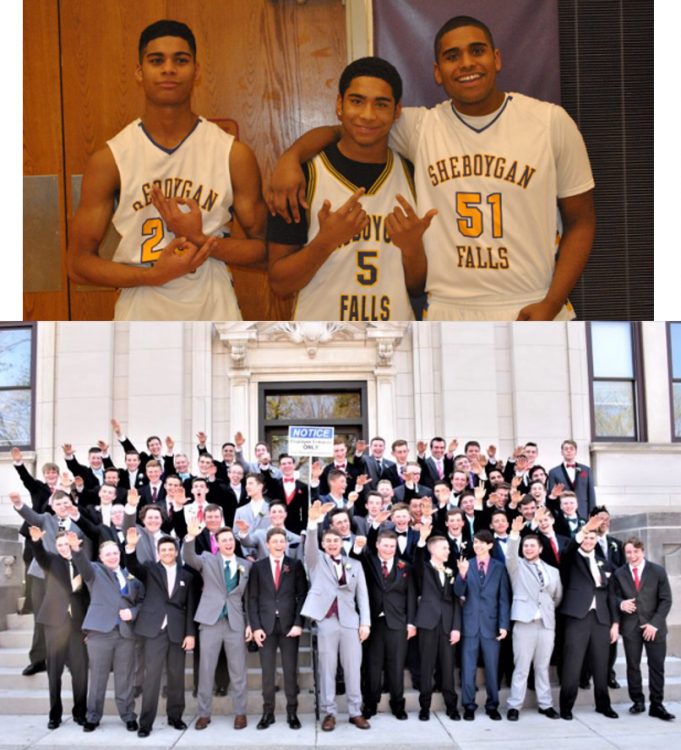Since the Baraboo prom Nazi salute photo went viral, many have wondered how the school administration would respond. While I have yet to receive a formal response to my Open Letter to Baraboo School Board, the school administrator recently announced that:
“because of students’ First Amendment rights, the district is not in a position to punish the students for their actions.”
To be clear, in my open letter, I did not ask the Baraboo School Board to punish these students. Rather, I urged the board to engage their students in Holocaust and white nationalism education, critical thinking, and restorative justice. While it is still my hope that the Baraboo School District will engage in these important educational practices, it is troubling that the school administrator is throwing a First Amendment shield around these students who engaged, whether intentionally or not, in clear hate speech when they raised their arms in a Nazi salute.
While students do have some level of First Amendment protection in school, that protection is not absolute. The National School Boards Association (NSBA) has published an excellent guide on this issue. As the NSBA guide states:
One court decided that a school district’s action banning a student from wearing clothing that displayed the Confederate flag at school was permissible. Citing examples of past racial incidents that had occurred in the school, the court concluded that school officials could have reasonably foreseen that allowing students to wear clothing that displayed the Confederate flag at school would materially and substantially disrupt the work and discipline of the school. In another case, a court ruled that administrators did not violate a student’s First Amendment right to freedom of speech when they prohibited him from expressing support for a friend accused of shooting a police officer, because of its potential to incite gang violence. In that case, the court explained that “past incidents of gang violence and increased tension caused by intimidation from gang members served as justification for the ban of a slogan clearly associated with a gang.” In yet another case, a court held that a school could regulate student speech if it had reason to think that the speech would lead to a decline in student test scores, an upsurge in truancy, or other symptoms of a sick school—symptoms, therefore, of substantial disruption.
As a colleague in Milwaukee, Lauren Avery Blumenthal, pointed out to me, many school districts specifically prohibit gang symbols. A few years ago, the Sheboygan Falls High School basketball team issued a one-day suspension when this photo (below) was published in the local newspaper because of the alleged flashing of gang symbols, though these students who are brothers denied they were flashing gang symbols and were making a gesture commonly made by NBA players after a successful 3-point shot.

Similar school discipline has been meted out in other school districts for flashing gang symbols. The hypocrisy is especially clear in light of the Baraboo School District’s explicit policy promising a HOSTILE FREE ENVIRONMENT. It remains exceedingly unclear how the Baraboo School District administrator’s decision to protect a Nazi salute under the First Amendment, conforms to her district’s policy to protect its students be “free from discrimination,” as the policy states.
While I do not know how the Baraboo School District would respond to students of color who flashed gang symbols, what I do know is that other school districts and educators have approached me to engage in Holocaust and white nationalism education, as well as critical thinking, and restorative justice training. In Indianapolis, a school principal promptly apologized when students raised their arms in a Nazi salute. The Baraboo School District can still do the right thing. Those of us who have offered to help the school district continue to wait for a more appropriate response than hiding behind an alleged First Amendment shield.
This column was first published on Spitzer-Resnick’s blog.










